#merchant ivory documentary
Explore tagged Tumblr posts
Text


#Maurice and Clive#Maurice and Alec#parallels#Maurice Hall#James Wilby#Alec Scudder#Rupert Graves#Clive Durham#Hugh Grant#maurice 1987#james ivory#merchant ivory#e m forster#merchant ivory documentary#Maurice deleted scene
46 notes
·
View notes
Text




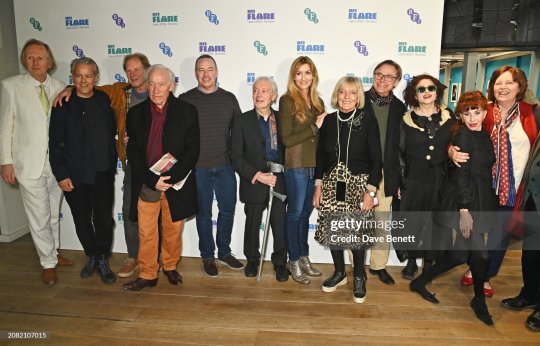
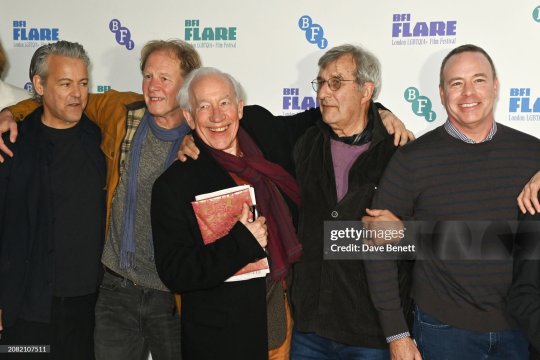
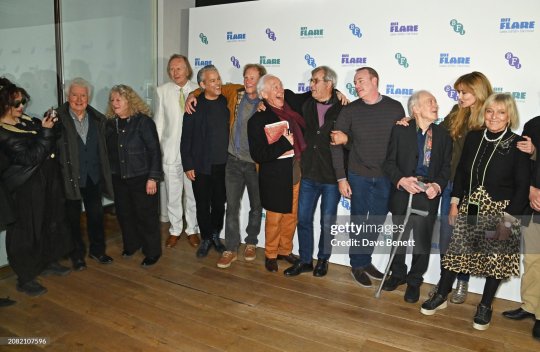
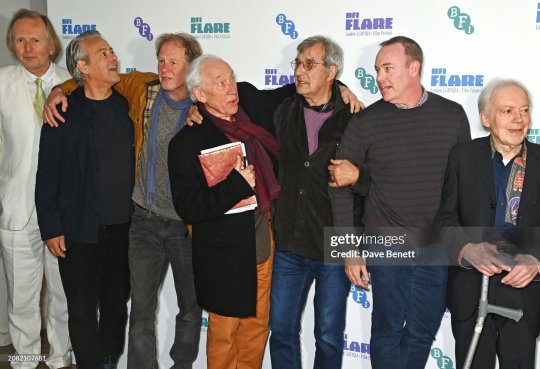
#rupert graves#2024#BFI Flare#Merchant Ivory family#Stephen Soucy#Documentary#Merchant Ivory Documentary#another scarf#March 16th#Alec & Maurice reunion#my
94 notes
·
View notes
Text










Title sequences for Merchant Ivory (2023)
#merchant ivory#ismail merchant#james ivory#a room with a view#maurice#maurice 1987#howards end#the remains of the day#documentary#my gifs#gifset#gifs#gif#filmedit#filmgifs#moviegifs#cult movies#cult film#tvfilmsource#gay#lgbt#lgbtq#lgbtqia#2020s
50 notes
·
View notes
Text
Finally watched THE REMAINS OF THE DAY: THE READ WITH STEVE PEMBERTON.


In terms of my knowledge of the story – I've not read the novel (the only Ishiguro novel I've read is NEVER LET ME GO), but I had seen the film adaption many, many years ago – unfortunately, this means I don't recall too much about it.
However, before going into this, I did remember one part – recently, I had watched the documentary MERCHANT IVORY, which details the partnership between Ismail Merchant and James Ivory (and their collaborations with Ruth Prawer Jhabvala & Richard Robbins). When they discuss the film, they highlight the "racy book" scene as being incredibly romantic but also highly repressed:
youtube
In terms of THE READ itself – What a beautiful production, and I thought Steve did a terrific job! Stories about paternal relationships are kind of my kryptonite, so I found Part 2 to be particularly moving. And his acting in the ending scene caught me by surprise! Wow!!


After all, there's no turning back the clock now. One can't be forever dwelling on what might have been.
Very cool to have come across this programme because of r&s – if anything, it's motivating me to pick up reading again. If I can somehow be less terminally online...
#steve pemberton#the read#the remains of the day#merchant ivory#frames posts coming up this weekend!#if i come across the film i'm definitely giving it a rewatch#iirc i had seen it maybe late 2000s - during my hugh grant phase#bc he had said (and still contends i think) that that film was the best one he'd ever been in#and he spoke highly of merchant ivory in the doc as well#vagueeyes.txt
12 notes
·
View notes
Text

Bless that Merchant Ivory documentary for blessing me with a high-quality and detailed version of this beautiful image from Maurice.
#James Wilby#Maurice#Rupert Graves#Maurice 1987#Maurice Hall#Alec Scudder#Stephen Soucy#Still waiting for that documentary#Me cropping the image like hell to avoid Tumblr shrinking the image down#This entire image should stay the same size
337 notes
·
View notes
Text
If you were asked to guess which prestigious film-making duo had spent their career scratching around desperately for cash, trying to wriggle out of paying their cast and crew, ping-ponging between lovers, and having such blood-curdling bust-ups that their neighbours called the police, it might be some time before “Merchant Ivory” sprang to mind. But a new warts-and-all documentary about the Indian producer Ismail Merchant and the US director James Ivory makes it clear that the simmering passions in their films, such as the EM Forster trilogy of A Room With a View, Maurice and Howards End, were nothing compared to the scalding, volatile ones behind the camera.
From their initial meeting in New York in 1961 to Merchant’s death during surgery in 2005, the pair were as inseparable as their brand name, with its absence of any hyphen or ampersand, might suggest. Their output was always more eclectic than they got credit for. They began with a clutch of insightful Indian-set dramas including Shakespeare-Wallah, their 1965 study of a troupe of travelling actors, featuring a young, pixieish Felicity Kendal. From there, they moved on to Savages, a satire on civilisation and primitivism, and The Wild Party, a skewering of 1920s Hollywood excess that pipped Damien Chazelle’s Babylon to the post by nearly half a century.
It was in the 1980s and early 1990s, though, that Merchant Ivory became box-office titans, cornering the market in plush dramas about repressed Brits in period dress. Those literary adaptations launched the careers of Hugh Grant, Helena Bonham Carter, Rupert Graves and Julian Sands, and helped make stars of Emma Thompson and Daniel Day-Lewis. Most were scripted by Ruth Prawer Jhabvala, who had been with them, on and off, since their 1963 debut The Householder; she even lived in the same apartment building in midtown New York. Many were scored by Richard Robbins, who was romantically involved with Merchant while also holding a candle for Bonham Carter. These films restored the costume drama to the position it had occupied during David Lean’s heyday. The roaring trade in Jane Austen adaptations might never have happened without them. You could even blame Merchant Ivory for Bridgerton.
Though the pictures were uniformly pretty, making them was often ugly. Money was always scarce. Asked where he would find the cash for the next movie, Merchant replied: “Wherever it is now.” After Jenny Beavan and John Bright won an Academy Award for the costumes in A Room With a View, he said:“I got you your Oscar. Why do I need to pay you?” As Ivory was painstakingly composing each shot, Merchant’s familiar, booming battle cry would ring out: “Shoot, Jim, shoot!”
Heat and Dust, starring Julie Christie, was especially fraught. Only 30 or 40% of the budget was in place by the time the cameras started rolling in India in 1982; Merchant would rise at dawn to steal the telegrams from the actors’ hotels so they didn’t know their agents were urging them to down tools. Interviewees in the documentary concede that the producer was a “conman” with a “bazaar mentality”. But he was also an incorrigible charmer who dispensed flattery by the bucketload, threw lavish picnics, and wangled entrées to magnificent temples and palaces. “You never went to bed without dreaming of ways to kill him,” says one friend, the journalist Anna Kythreotis. “But you couldn’t not love him.”
Stephen Soucy, who directed the documentary, doesn’t soft-pedal how wretched those sets could be. “Every film was a struggle,” he tells me. “People were not having a good time. Thompson had a huge fight with Ismail on Howards End because she’d been working for 13 days in a row, and he tried to cancel her weekend off. Gwyneth Paltrow hated every minute of making Jefferson in Paris. Hated it! Laura Linney was miserable on The City of Your Final Destination because the whole thing was a shitshow. But you watch the films and you see no sense of that.”
Soucy’s movie features archive TV clips of the duo bickering even in the midst of promoting a film. “Oh, they were authentic all right,” he says. “They clashed a lot.”The authenticity extended to their sexuality. The subject was not discussed publicly until after Ivory won an Oscar for writing Call Me By Your Name: “You have to remember that Ismail was an Indian citizen living in Bombay, with a deeply conservative Muslim family,” Ivory told me in 2018. But the pair were open to those who knew them. “I never had a sense of guilt,” Ivory says, pointing out that the crew on The Householder referred to him and Merchant as “Jack and Jill”.
Soucy had already begun filming his documentary when Ivory published a frank, fragmentary memoir, Solid Ivory, which dwells in phallocentric detail on his lovers before and during his relationship with Merchant, including the novelist Bruce Chatwin. It was that book which emboldened Soucy to ask questions on screen – including about “the crazy, complicated triangle of Jim, Ismail and Dick [Robbins]” – that he might not otherwise have broached.
The documentary is most valuable, though, in making a case for Ivory as an underrated advocate for gay representation. The Remains of the Day, adapted from Kazuo Ishiguro’s Booker-winning novel about a repressed butler, may be the duo’s masterpiece, but it was their gay love story Maurice that was their riskiest undertaking. Set in the early 20th century, its release in 1987 could scarcely have been timelier: it was the height of the Aids crisis, and only a few months before the Conservative government’s homophobic Section 28 became law.
“Ismail wasn’t as driven as Jim to make Maurice,” explains Soucy. “And Ruth was too busy to write it. But Jim’s dogged determination won the day. They’d had this global blockbuster with A Room With a View, and he knew it could be now or never. People would pull aside Paul Bradley, the associate producer, and say: ‘Why are they doing Maurice when they could be making anything?’ I give Jim so much credit for having the vision and tenacity to make sure the film got made.”
Merchant Ivory don’t usually figure in surveys of queer cinema, though they are part of its ecosystem, and not only because of Maurice. Ron Peck, who made the gay classic Nighthawks, was a crew member on The Bostonians. Andrew Haigh, director of All of Us Strangers, landed his first industry job as a poorly paid assistant in Merchant’s Soho office in the late 1990s; in Haigh’s 2011 breakthrough film Weekend, one character admits to freeze-framing the naked swimming scene in A Room With a View to enjoy “Rupert Graves’s juddering cock”. Merchant even offered a role in Savages to Holly Woodlawn, the transgender star of Andy Warhol’s Trash, only for her to decline because the fee was so low.
The position of Merchant Ivory at the pinnacle of British cinema couldn’t last for ever. Following the success of The Remains of the Day, which was nominated for eight Oscars, the brand faltered and fizzled. Their films had already been dismissed by the director Alan Parker as representing “the Laura Ashley school” of cinema. Gary Sinyor spoofed their oeuvre in the splendid pastiche Stiff Upper Lips (originally titled Period!), while Eric Idle was plotting his own send-up called The Remains of the Piano. The culture had moved on.
There was still an appetite for upper-middle-class British repression, but only if it was funny: Richard Curtis drew on some of Merchant Ivory’s repertory company of actors (Grant, Thompson, Simon Callow) for a run of hits beginning with Four Weddings and a Funeral, which took the poshos out of period dress and plonked them into romcoms.
The team itself was splintering. Merchant had begun directing his own projects. When he and Ivory did collaborate, the results were often unwieldy, lacking the stabilising literary foundation of their best work. “Films like Jefferson in Paris and Surviving Picasso didn’t come from these character-driven novels like Forster, James or Ishiguro,” notes Soucy. “Jefferson and Picasso were not figures that audiences warmed to.” Four years after Merchant’s death, Ivory’s solo project The City of Your Final Destination became mired in lawsuits, including one from Anthony Hopkins for unpaid earnings.
Soucy’s film, though, is a reminder of their glory days. It may also stoke interest in the movies among young queer audiences whose only connection to Ivory, now 95, is through Call Me By Your Name. “People walk up to Jim in the street to shake his hand and thank him for Maurice,” says Soucy. “But I also wanted to include the more dysfunctional side of how they were made. Hopefully it will be inspiring to young film-makers to see that great work can come out of chaos.”
11 notes
·
View notes
Text
Complete Merchant Ivory
1. THE HOUSEHOLDER, 1963 2. SHAKESPEARE WALLAH, 1965 3. BOMBAY TALKIE, 1970 4. SAVAGES, 1972 5. ROSELAND, 1977 6. HULLABALOO OVER GEORGIE & BONNIES PICTURES, 1978 7. THE EUROPEANS, 1979 8. JANE AUSTIN IN MANHATTAN, 1980 9. QUARTET, 1981 10. HEAT AND DUST, 1983 11. THE COURTESANS OF BOMBAY, 1983 12. THE BOSTONIANS, 1984 13. THE DECEiVERS, 1988 14. THE PERFECT MURDER, 1988 15. THE BALLAD OF SAD CAF, 1991 16. HOWARDS END, 1992 17. IN CUSTODY, 1994 18. MAURICE, 1996 19. THE PROPRIETOR, 1996 20. THE MYSTIC MASSEUR, 2001 DOCUMENTARIES: 1. VENICE THEMES AND VARIATIONS, 1957 2. THE SWORD AND THE FLUTE, 1959 3. THE DELHI WAY, 1964 4. ADVENTURES OF A BROWN MAN IN SEARCH OF CIVILIZATION, 1972 5. HELEN QUEEN OF THE NAUTCH GIRLS, 1973 6. SWEET SOUNDS, 1976 7. STREET MUSICIANS OF BOMBAY, 1995 SHORT FILMS: 1. THE CREATION OF WOMAN, 1960 2. AUTOBIOGRAPHY OF A PRINCESS, 1975 The White Countess (2005) The Divorce (2003) The Golden Bowl (2000) A Soldier's Daughter Never Cries (1998) Surviving Picasso (1996) Jefferson in Paris (1995) The Remains of the Day (1993) - Slaves of New York (1989) The Wild Party (1975) The Guru (1969)
2 notes
·
View notes
Text
Wait omg the Hugh Grant quote about everyone fancying each other on film sets before phones came along is from the Merchant Ivory documentary???
2 notes
·
View notes
Text
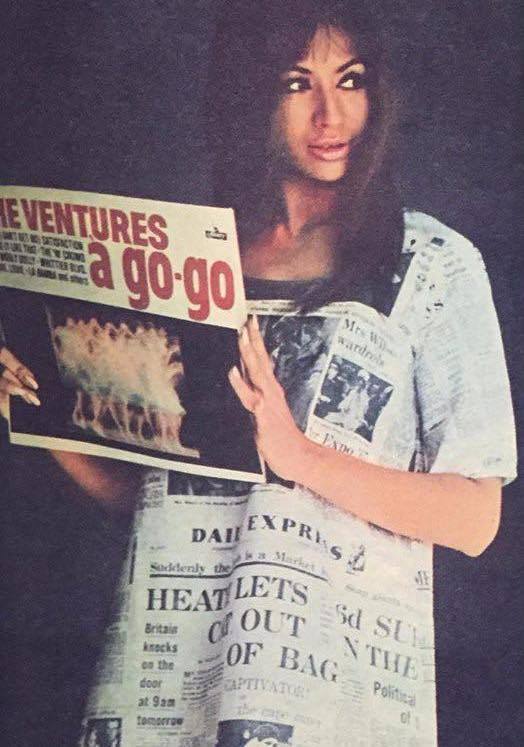
Happy Birthday, #Helen (21/11).
Helen's foray into Bollywood began with a little help from a family friend, actress Cuckoo. Starting with group dance roles in movies like "Shabistan" (1951) and "Awaara" (1951), Helen quickly became a regular in the industry. Her talent shone through, earning her solo dance spots in films such as "Alif Laila" (1954) and "Hoor-e-Arab" (1955). Notably, she also appeared as a street singer in "Mayurpankh" (1954).
A significant breakthrough came in 1958 when Helen was just 19. Her performance in the song "Mera Naam Chin Chin Chu" from the film "Howrah Bridge" captured hearts. Sung by Geeta Dutt, this song marked the start of a series of successful projects for Helen. The 1960s and 1970s saw her rise to fame, with Geeta Dutt lending her voice for many of Helen's performances. During this period, Helen often portrayed characters who would perform a song or dance and then exit the plot, paving the way for the film's lead actress.
By 1969, Helen had become a household name, even gracing the cover of Filmfare Magazine. Another prominent singer, Asha Bhosle, frequently provided playback for Helen's performances, especially during the 1960s and early 1970s. Helen's versatility wasn't just limited to dance; she was nominated for the Filmfare Award for Best Supporting Actress in 1965 for her role in "Gumnaam". Her dramatic roles in "China Town" and "Sachaai" (1969), alongside Shammi Kapoor, were box office hits. She also portrayed a compelling character in "Chhote Sarkar" (1974), co-starring Shammi Kapoor and Sadhana. Helen's hit dance numbers included 'Suku Suku' in "Junglee", 'Yamma Yamma' in "China Town", and several others.
Helen's fame wasn't confined to the Indian cinema; she performed on stages in London, Paris, and Hong Kong. In 1973, "Helen, Queen of the Nautch Girls", a 30-minute documentary by Merchant Ivory Films, highlighted her life and career. This was followed by Jerry Pinto's book "The Life and Times of an H-Bomb" in 2006, which won a National Film Award. Writer Salim Khan played a key role in Helen's career, casting her in several films he co-scripted. Her performance in "Lahu Ke Do Rang" (1979) earned her the Filmfare Award for Best Supporting Actress. In recognition of her contributions, Helen received the Filmfare Lifetime Achievement Award in 1999.
Though she officially retired in 1983, Helen made occasional appearances in films like "Khamoshi: The Musical" (1996) and "Mohabbatein" (2000). She also appeared alongside her real-life step-son #SalmanKhan in "Hum Dil De Chuke Sanam" and in "Humko Deewana Kar Gaye" (2006). Her contributions were further acknowledged when she was selected for the Padma Shri in 2009, alongside Aishwarya Rai and Akshay Kumar. Helen also served as a judge in the semifinals and finals of India's 2009 "Dancing Queen" television series.
12 notes
·
View notes
Text
vimeo
The documentary on Merchant Ivory that my husband did all the sound mixing/post-production supervision for is screening at the Village East on Saturday :) should get a wider release next year!
10 notes
·
View notes
Text
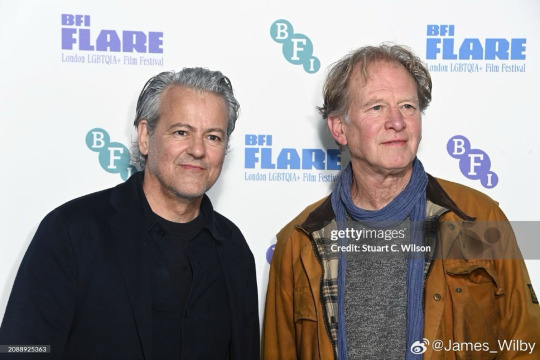

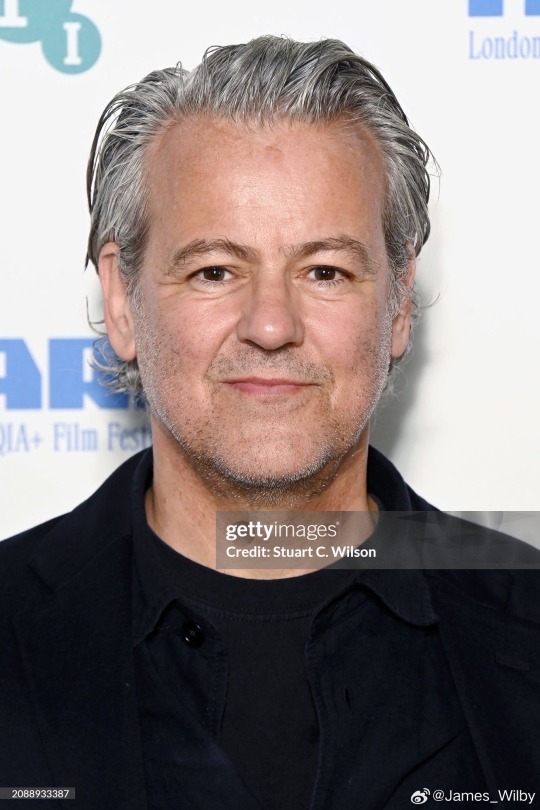
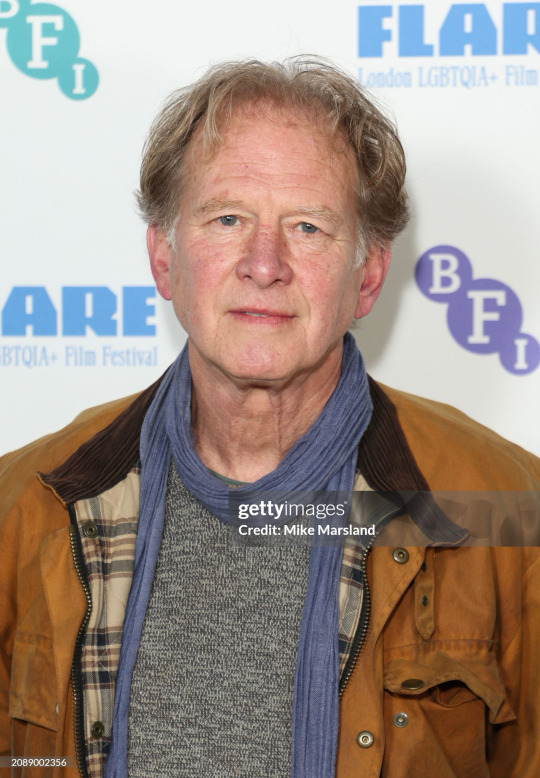

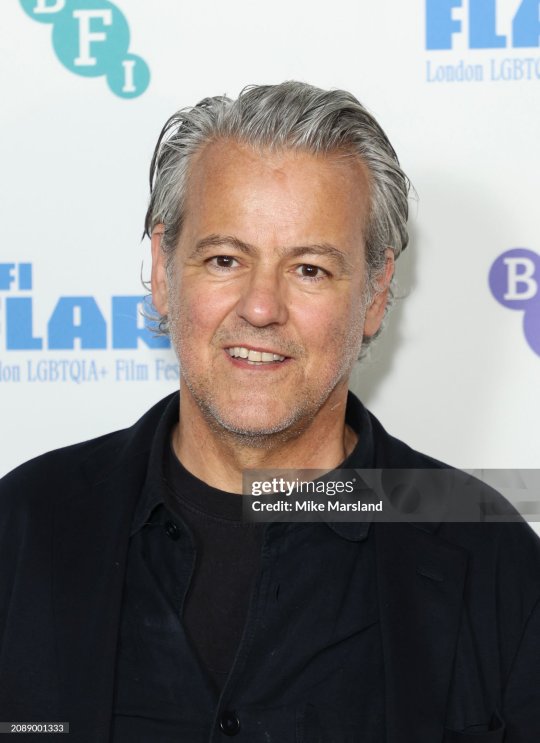
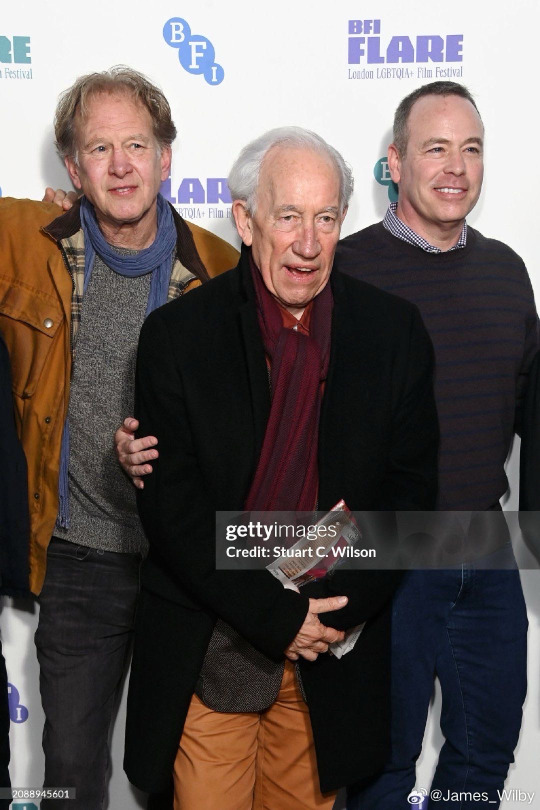

Finally!!! Maurice and Alec reunion!
BFI Flare 2024
#james wilby#rupert graves#2024#BFI Flare#Merchant Ivory family#Stephen Soucy#Documentary#Merchant Ivory Documentary#another scarf#March 16th#Alec & Maurice reunion#Gettyimage#Stuart C. Wilson#my
40 notes
·
View notes
Text
0 notes
Text

British and Irish Film Festival 2024
The Problem With People is a charming buddy comedy that brings together the talented Paul Reiser and Colm Meaney as estranged cousins who embark on a journey of reconciliation in the stunning Irish countryside. The film beautifully captures the essence of family dynamics, blending humor with heartfelt moments that resonate with audiences.
Reiser and Meaney showcase delightful chemistry, delivering witty banter and relatable performances that keep viewers engaged. The picturesque backdrop adds to the film's charm, creating a warm atmosphere that enhances the story's emotional depth.
While some elements may feel familiar, the film's exploration of familial bonds and personal growth offers a refreshing take on the genre. Overall, The Problem With People is an enjoyable watch that reminds us of the importance of connection and understanding, making it a feel-good experience for anyone seeking lighthearted entertainment.

Chuck Chuck Baby is a delightful Welsh romantic comedy directed by Janis Pugh, blending surreal humor with poignant themes of love and liberation.
The film follows Helen, played by Louise Brealey, who navigates a chaotic living situation with her ex-husband and his new family while reigniting a spark with her childhood crush, Joanne.
Set against the backdrop of a chicken factory, it explores female empowerment through a vibrant ensemble cast. The musical elements enhance the emotional depth, making it a unique and heartwarming viewing experience that resonates with audiences seeking both laughter and reflection.

Tarrac is a poignant Irish film directed by Declan Recks, exploring themes of female friendship and familial bonds against the stunning backdrop of the Kerry coastline.
The story follows Aoife Ni Bhraoin, played by Kelly Gough, as she returns home to support her recovering father while grappling with her mother's death.
The film beautifully showcases Aoife's rekindled passion for rowing alongside a diverse group of women, each with rich backstories. The ensemble cast delivers compelling performances, particularly Lorcan Cranitch as her father.
Visually captivating and emotionally resonant, Tarrac is a celebration of community and resilience.

Merchant Ivory, directed by Stephen Soucy, is a documentary that delves into the influential partnership between Ismail Merchant and James Ivory. Known for revitalizing the costume drama genre, the film offers a chronological exploration of their most celebrated works like "A Room With a View" and "The Remains of the Day" while also highlighting their groundbreaking portrayals of gay characters.
Featuring interviews with actors like Hugh Grant and Emma Thompson, it provides an engaging yet straightforward look at their creative process and personal dynamics. While informative, it may lack the depth some viewers desire.
Sessions from Oct 23-Nov 13: Link below
0 notes
Text
The musical storytelling by Richard Robbins certainly is intentional. Listen until the VERY end of the end credits – there’s something extra there for all who love Maurice! The Maurice DVD/Blu-ray extras include an interview with Robbins in which he says that the Maurice soundtrack almost ‘wrote itself’ (because he knew the novel so intimately).
If you don’t know about Dick Robbins you will have a lovely time reading about him. He was a pianist from the age of 5 and is regarded as one of the film soundtrack greats. He became friends with Merchant, Ivory and Jhabvala because he was the music teacher to one of Ruth Jhabvala’s daughters at the Mannes College of Music in Manhattan. He composed/arranged every Merchant Ivory film score from The Europeans (1979) onwards until his death. As Stephen Soucy’s recent Merchant Ivory documentary makes public, he was also (producer) Ismail Merchant’s lover between the late 1970s and meeting his later long-term partner Michael Schell. (Merchant and Ivory’s relationship had become an open one.) There’s more on this in the documentary, but I won’t spoil it for you!
In the mid-1970s, with backing from Merchant Ivory, Robbins also directed a lovely documentary, Sweet Sounds, about the Mannes College and the musically gifted kids there.
Recurring Musical Motif
One thing I absolutely adore with the Maurice 1987 soundtrack is the recurring melody that plays at different points of the movie. In the song, "Prologue: The Lesson", there is that original introduction of what I consider Maurice's musical motif/theme. The way I see it, the motif plays when Maurice is feeling fulfilled and loved, or when he feels like himself. He was given presents by his classmates and teachers, henceforth feeling fulfilled and loved. This motif does not play again fully until later in the movie because even though Maurice loved and was loved by Clive, he was not feeling fulfilled, at least not in the scenes we see.
Sometimes small amounts of Maurice's motif will show up in the music. For examples, that similar motif plays during his nightmare, "A Moonlit Night."
However, the full portion of his motif doesn't play until "The Boathouse." This is when he is reunited with Alec after he thought he would never see him again. That familiar motif then slowly creeps it's way in, connecting the music back to the idea of Maurice feeling fulfilled. When the end credits start to roll the fully fleshed out version of Maurice's motif/theme starts to play.
To me, the music is the way it is because Maurice is finally feeling fulfilled and happy. He's feeling like himself. Maurice found someone who will love him without fear and would sacrifice so much just for him. It is a wonderful ending to the bittersweet story in which the music gives us a big finish at the end.
Even if it was not intentional, the musical storytelling that occurs is one of my favorites. The music helps paint a picture and it was perfect in Maurice 1987.
#richard robbins#merchant ivory#maurice 1987#film music#james ivory#ismail merchant#ruth prawer jhabvala#stephen soucy#sweet sounds#mannes college of music
44 notes
·
View notes
Text

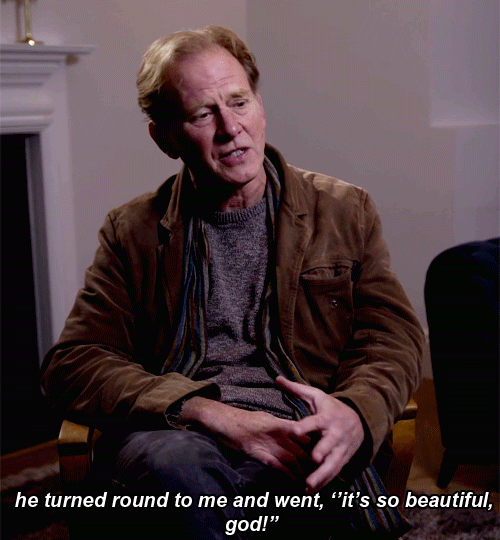




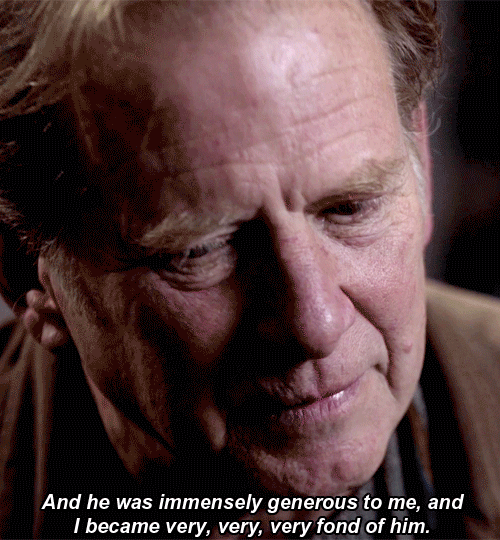
James Wilby on Ismail Merchant for Stephen Soucy's documentary on Merchant Ivory.
"In my head, I thought he was the big bad wolf, you know, I remember when we saw the film, the first screening of the film, I had actually seen it before, but only in an editing room. I was sitting behind Ismail, I think. And when the credits rolled, and I just saw his shoulders doing that, and Ismail just, was tears rolling down his face, he turned round to me and went, "it's so beautiful, god!" But it was entirely genuine, this is a, you know, this is a man who wore his heart on his sleeve, and at that point, I went, "oh, this is not the big bad wolf," and he was immensely generous to me, and I became very, very, very fond of him."
#James Wilby#Merchant Ivory#I've been making so many gifs of younger James Wilby#I thought I'd make some gifs of him at his current age#Or as recent as this interview is#Ismail Merchant#Maurice 1987#Maurice
172 notes
·
View notes
Text
Women Talking (2022)
Sarah Polley is one of those auteurs whose filmography plays out like a student learning their craft. Her feature film debut “Away From Her” was simplistic in its narrative, then came her autobiographical documentary “Stories We Tell” where her storytelling improved. Now we have “Women Talking” which is Polley coming into a milieu of character development and emotional strife. With the Academy Awards only a few hours away from the writing of this post, Polley will surely be dusting off space on her shelf for her well deserved Oscar.

From Miriam Toews’ novel of the same name, “Women Talking” focuses on a small group of women and girls in a Hutterite colony in Canada. Abuse has been rampant for a long time and things have hit a breaking point with the arrest of some of the colony’s most powerful elders. With charges pending, a meeting of some of the victims takes place in which a decision must be made. Will they stay behind and forgive their abusers, which would mean a place in heaven? Or will they desert the only home they ever know and risk eternal damnation? Over the course of 24 hours, that choice is debated back and forth.
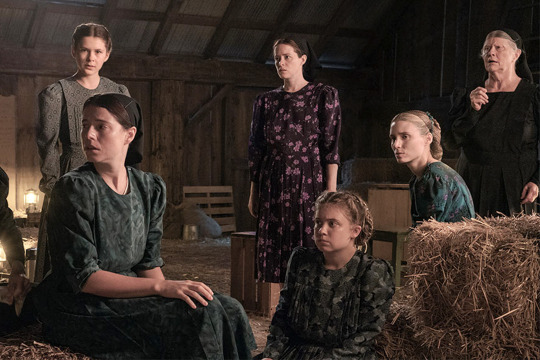
The only thing contemporary about “Women Talking” is the year that the story takes place; 2010. Beyond that, this is as much a period piece as any classic novel from the 19th century adapted by Merchant-Ivory or David Lean. The characters’ fashion, speech, demeanor and movement all harken back to a long ago era, despite the year and their insulation from the outside world is also odd. Just like the Amish in Pennsylvania or Hasidic Jews in parts of Brooklyn, the past is the present, and the present is non-existent. The choice to photograph in semi-black and white was also wise as if to illustrate the purgatory that each woman lives through on a daily basis, but also the fact that they live in another universe that happens to be on Earth. Even the film score by Oscar winner Hildur Guðnadóttir has the feel of a Sci-fi epic, but with a more Classical slant. It may have taken place in recent years and brings up now-current issues such as #MeToo, but “Women Talking” couldn’t be more of an anomaly in so many categories, and that winds up being the film’s greatest strength.

“Women Talking” starts very deceptively as a Brecht style drama in which dialogue is spoken more in verse format and there’s very little emotion from each character. Words repeat nonstop and you wonder what the nucleus of the film really is. But that is the entire point, these women are conditioned to act as common folk, knowing very little about things that the majority of humanity take for granted, like maps and grammatical punctuation. Brecht’s work can be seen as dry poetic legalese, that stagnates the environment around its characters. But then gradually, the dialogue becomes more free-flowing, the sentences much looser in pronunciation��and the cries much more melodic, rather than pent up and the colors even become a little brighter. As you see the characters evolve, so do their surroundings.

One of the drawbacks about a film’s ensemble is that there are no truly standout performances, but rather little standout scenes. The cast spans from veterans like Judith Ivey, Frances McDormand and Sheila McCarthy to the newer crop of actresses like Claire Foy, Rooney Mara and Jessie Buckley. All of them are equally amazing and do their own acting exercises which illuminates the drama. Ivey is the one that has the most heart tugging scenes. Being the eldest of the group, her character Agata knows only the few acres of land as her world, but its her strength that makes her see beyond familiarity. Foy’s Salome is another character whose hurt and injury is all over her face and voice. Buckley’s Mariche is probably the most delicate of the women, precious like a porcelain doll, but fragile like cracked glass. The problem is, not enough time is given to really let us know these women individually, as opposed to as the collective that are presented as. That is not the fault of the screenplay, but the plot’s setting and circumstances. That being said, I would have liked to at least see one or two characters up close as a sample of what life in the colony was like instead of brief flashbacks that give off a superficial experience.
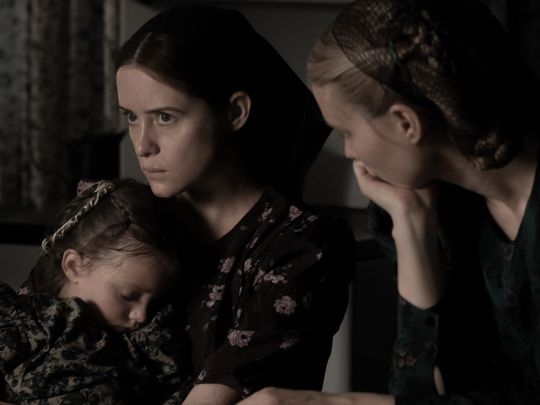
After tonight’s Oscar ceremony, whether or not Sarah Polley wins the Oscar for Best Adapted Screenplay, she will be a major player in Hollywood and I hope she takes advantage of it well. “Women Talking” may not be perfect, but it’s the calling card for a fruitful career that I hope will be rich in future masterpieces.
8/10
#dannyreviews#women talking#sarah polley#miriam toews#hildur guðnadóttir#judith ivey#frances mcdormand#sheila mccarthy#claire foy#rooney mara#jessie buckley#metoo#academy awards#oscars#hutterites#canada
13 notes
·
View notes